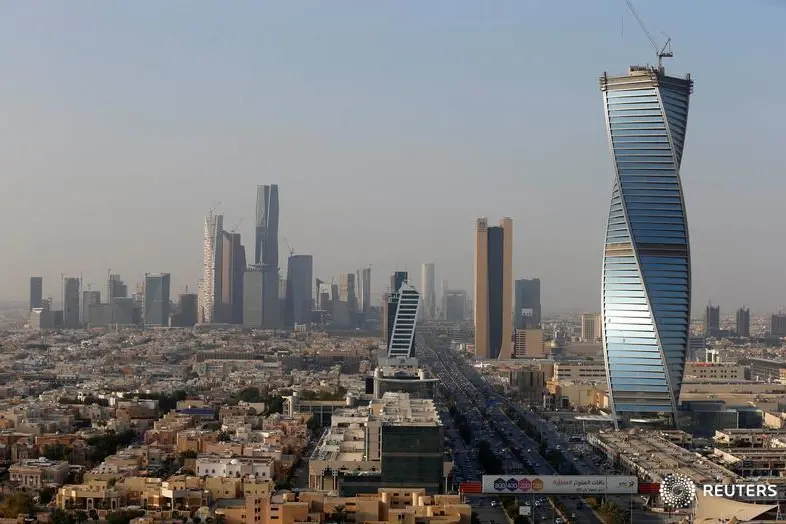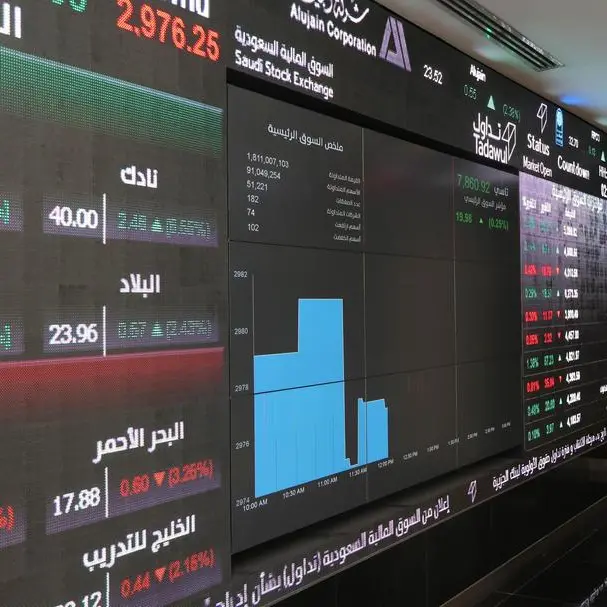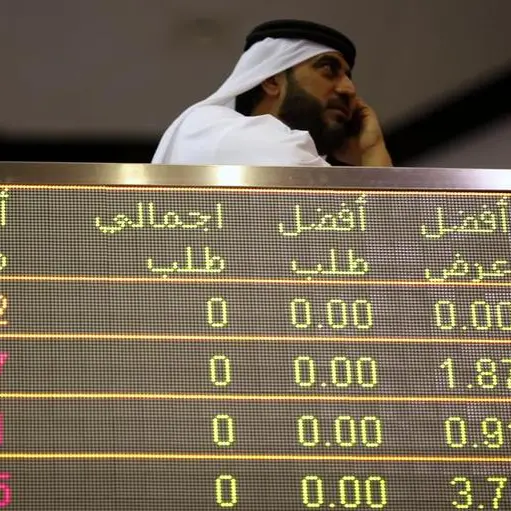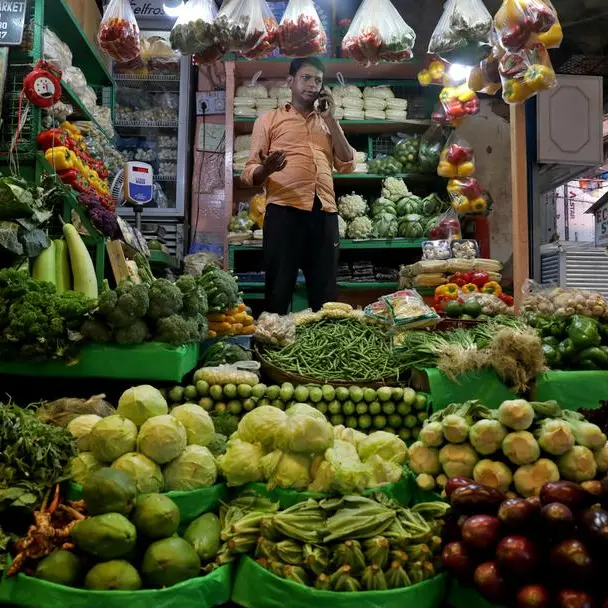PHOTO
Derayah Financial, a Riyadh-based investment firm, became the latest company to market the terms of a real estate investment trust (REIT) to Saudi investors on Tuesday, with the company claiming that its 1.17 billion Saudi riyal ($312.5 million) Derayah REIT would be one of the biggest and most diverse REITs launched on the Saudi stock market to date.
In a press statement on December 19 announcing details of the REIT offer, which is open to subscribers from December 27 to January 9, Derayah Financial said the trust would contain 15 real estate assets (including office, retail, residential, warehouse and hospitality units) in six cities - Riyadh, Dammam, Jubail, Khobar, Jeddah and Al-Ahsa. Just over 30 percent of the total REIT fund is being offered to investors.
In total, seven REITs have been floated onto the Saudi stock exchange, Tadawul, since the 500 million riyal Riyad REIT became the first to list in November last year. However, the Derayah REIT is one of eight new funds to have been approved by the kingdom's Capital Markets Authority and which are currently planning a listing on Tadawul. This is in addition to two new funds being created by NCB Capital and Blominvest, which will themselves invest in a portfolio of REITs.
“Definitely, what we are seeing in Saudi Arabia is a strong enthusiasm around this new type of investment vehicle," Raya Majdalani, research manager at Knight Frank Middle East told Zawya in a telephone interview earlier this month.
She said that asset managers in the kingdom were capitalising on the appetite shown by investors, who have so far been "very interested in subscribing to these funds".
"They were all oversubscribed, plus they were originally trading at a strong price to NAV (net asset value of the REIT). It was nearing 2x in certain cases, but in the last two months there was a correction in the price," she said.
Many of the listed REITs now trade at a discount to their net asset value, although Majdalani said this is common for REITs in more mature markets in Asia, the United Kingdom and the United States.
Sylvain Vieujot, chief executive officer of Equitativa Group, which manages the Emirates REIT fund founded in 2010 and listed on Nasdaq Dubai since 2014, said that REITs have proved popular among investors because they offer exposure to investment-grade commercial real estate assets that are often too expensive or difficult to trade.
‘Liquid and easy’
"It makes the whole process liquid and easy, which is a key problem of real estate,” said Vieujot in a telephone interview earlier this month. “Usually, the best properties are the largest, so it's difficult for a single investor to buy them.”
Majdalani said that REITs not only give exposure to investment-grade real estate, but also to the exchange on which the REIT is listed.
"So, at the end of the day, you can get the benefit of both the underlying asset, which is real estate, and the stock market in terms of capital appreciation," she said.
Vieujot said that another appeal of REITs is that they typically pay out the bulk of their net profits to investors in the form of dividends (90 percent in the case of most listed Saudi REITs), which makes them appealing to institutional investors that require regular income streams.
Majdalani said there were also diversification benefits by offering different assets in different cities, although some of the REITs that have initially launched in Saudi have been limited to specific cities and asset classes.
Another limitation with some of the initial listed Saudi REITs has been their size, or lack of it, according to Gaurav Shivpuri, head of capital markets for real estate consultancy firm JLL MENA.
In a telephone interview with Zawya earlier this month, he argued that REITs should be no smaller than one billion Saudi riyals or UAE dirhams. If they are much smaller, the whole idea of the REIT being liquid and easily traded becomes less applicable, as there are a smaller number of shares in circulation, so fewer sellers. He also said for some REIT listings only 30 percent of shares are being offered to investors, again limiting opportunities to trade.
He expects the value placed on individual REITs by investors to diversify, with the smaller, poorly managed funds struggling to attract investors.
Separating values
"When they were originally launched, everybody was painting all REITs with the same brush in terms of the pricing," he said. "If the market is efficient, you will start to see a separation," he said.
An analysis by Knight Frank into the REITs market in the Gulf Cooperation Council, published in November, found that the six REITs currently listed in Saudi Arabia had a combined value of $742.7 million - meaning the average REIT size by market capitalisation in the kingdom was just $123.8 million. These varied, though, with the biggest being the Jadwa REIT Al Haramain fund investing in Makkah and Madinah properties, which was valued at $211.5 million. The smallest, the Al Jazira REIT investing in Jeddah warehouses, had a value of just $69.1 million.
The two listed REITs in the United Arab Emirates, Equitativa's Emirates REIT and the ENBD REIT (which floated in March this year and is run by Emirates NBD's asset management arm), had a combined value of $538 million. Emirates REIT was valued at $284 million and ENBD REIT at $254 million, although the former has since appreciated in value after successfully launching a debut $400 million sukuk earlier this month.
Vieujot said the sukuk had been arranged to refinance existing bank loans, removing interest rate risk. Including bank loans, Emirates REIT has built a portfolio with a total asset value of $845 million as of September 30, 2017.
"Ultimately, you get liquidity with size," he said. "We are the largest REIT...but even to global standards we are still fairly small. The average REIT in the U.S. is $4 billion. We have yet to reach $1 billion."
Getting bigger will not be easy, either, with Majdalani pointing out that one of the main stumbling blocks to the development of REITs will be the challenge faced by managers in securing enough investment-grade properties, especially in Saudi Arabia.
"Saudi Arabia is a market which is dominated by a lack of institutional-grade real estate," she said. "The major factor will be the quality and the supply of suitable assets that can be placed within these structures."
Yet if REITs are to continue attracting new investors, there will be two benefits for the sector as a whole.
One will be that the greater amount of money being placed into funds will mean that developers will have a greater opportunity to dispose of assets, meaning that they can recycle funds into new projects.
The other, Majdalani points out, is that these instruments are making the real estate sector more transparent.
"Just by the fact that we have REITs on the market, this is sending signs to investors that it is already a more transparent market and investors do like that," she said.
(Reporting by Michael Fahy; Editing by Shane McGinley)
(michael.fahy@thomsonreuters.com)
Disclaimer: This article is provided for informational purposes only. The content does not provide tax, legal or investment advice or opinion regarding the suitability, value or profitability of any particular security, portfolio or investment strategy. Read our full disclaimer policy here.
Our Standards: The Thomson Reuters Trust Principles
© ZAWYA 2017
In a press statement on December 19 announcing details of the REIT offer, which is open to subscribers from December 27 to January 9, Derayah Financial said the trust would contain 15 real estate assets (including office, retail, residential, warehouse and hospitality units) in six cities - Riyadh, Dammam, Jubail, Khobar, Jeddah and Al-Ahsa. Just over 30 percent of the total REIT fund is being offered to investors.
In total, seven REITs have been floated onto the Saudi stock exchange, Tadawul, since the 500 million riyal Riyad REIT became the first to list in November last year. However, the Derayah REIT is one of eight new funds to have been approved by the kingdom's Capital Markets Authority and which are currently planning a listing on Tadawul. This is in addition to two new funds being created by NCB Capital and Blominvest, which will themselves invest in a portfolio of REITs.
“Definitely, what we are seeing in Saudi Arabia is a strong enthusiasm around this new type of investment vehicle," Raya Majdalani, research manager at Knight Frank Middle East told Zawya in a telephone interview earlier this month.
She said that asset managers in the kingdom were capitalising on the appetite shown by investors, who have so far been "very interested in subscribing to these funds".
"They were all oversubscribed, plus they were originally trading at a strong price to NAV (net asset value of the REIT). It was nearing 2x in certain cases, but in the last two months there was a correction in the price," she said.
Many of the listed REITs now trade at a discount to their net asset value, although Majdalani said this is common for REITs in more mature markets in Asia, the United Kingdom and the United States.
Sylvain Vieujot, chief executive officer of Equitativa Group, which manages the Emirates REIT fund founded in 2010 and listed on Nasdaq Dubai since 2014, said that REITs have proved popular among investors because they offer exposure to investment-grade commercial real estate assets that are often too expensive or difficult to trade.
‘Liquid and easy’
"It makes the whole process liquid and easy, which is a key problem of real estate,” said Vieujot in a telephone interview earlier this month. “Usually, the best properties are the largest, so it's difficult for a single investor to buy them.”
Majdalani said that REITs not only give exposure to investment-grade real estate, but also to the exchange on which the REIT is listed.
"So, at the end of the day, you can get the benefit of both the underlying asset, which is real estate, and the stock market in terms of capital appreciation," she said.
Vieujot said that another appeal of REITs is that they typically pay out the bulk of their net profits to investors in the form of dividends (90 percent in the case of most listed Saudi REITs), which makes them appealing to institutional investors that require regular income streams.
Majdalani said there were also diversification benefits by offering different assets in different cities, although some of the REITs that have initially launched in Saudi have been limited to specific cities and asset classes.
Another limitation with some of the initial listed Saudi REITs has been their size, or lack of it, according to Gaurav Shivpuri, head of capital markets for real estate consultancy firm JLL MENA.
In a telephone interview with Zawya earlier this month, he argued that REITs should be no smaller than one billion Saudi riyals or UAE dirhams. If they are much smaller, the whole idea of the REIT being liquid and easily traded becomes less applicable, as there are a smaller number of shares in circulation, so fewer sellers. He also said for some REIT listings only 30 percent of shares are being offered to investors, again limiting opportunities to trade.
He expects the value placed on individual REITs by investors to diversify, with the smaller, poorly managed funds struggling to attract investors.
Separating values
"When they were originally launched, everybody was painting all REITs with the same brush in terms of the pricing," he said. "If the market is efficient, you will start to see a separation," he said.
An analysis by Knight Frank into the REITs market in the Gulf Cooperation Council, published in November, found that the six REITs currently listed in Saudi Arabia had a combined value of $742.7 million - meaning the average REIT size by market capitalisation in the kingdom was just $123.8 million. These varied, though, with the biggest being the Jadwa REIT Al Haramain fund investing in Makkah and Madinah properties, which was valued at $211.5 million. The smallest, the Al Jazira REIT investing in Jeddah warehouses, had a value of just $69.1 million.
The two listed REITs in the United Arab Emirates, Equitativa's Emirates REIT and the ENBD REIT (which floated in March this year and is run by Emirates NBD's asset management arm), had a combined value of $538 million. Emirates REIT was valued at $284 million and ENBD REIT at $254 million, although the former has since appreciated in value after successfully launching a debut $400 million sukuk earlier this month.
Vieujot said the sukuk had been arranged to refinance existing bank loans, removing interest rate risk. Including bank loans, Emirates REIT has built a portfolio with a total asset value of $845 million as of September 30, 2017.
"Ultimately, you get liquidity with size," he said. "We are the largest REIT...but even to global standards we are still fairly small. The average REIT in the U.S. is $4 billion. We have yet to reach $1 billion."
Getting bigger will not be easy, either, with Majdalani pointing out that one of the main stumbling blocks to the development of REITs will be the challenge faced by managers in securing enough investment-grade properties, especially in Saudi Arabia.
"Saudi Arabia is a market which is dominated by a lack of institutional-grade real estate," she said. "The major factor will be the quality and the supply of suitable assets that can be placed within these structures."
Yet if REITs are to continue attracting new investors, there will be two benefits for the sector as a whole.
One will be that the greater amount of money being placed into funds will mean that developers will have a greater opportunity to dispose of assets, meaning that they can recycle funds into new projects.
The other, Majdalani points out, is that these instruments are making the real estate sector more transparent.
"Just by the fact that we have REITs on the market, this is sending signs to investors that it is already a more transparent market and investors do like that," she said.
(Reporting by Michael Fahy; Editing by Shane McGinley)
(michael.fahy@thomsonreuters.com)
Disclaimer: This article is provided for informational purposes only. The content does not provide tax, legal or investment advice or opinion regarding the suitability, value or profitability of any particular security, portfolio or investment strategy. Read our full disclaimer policy here.
Our Standards: The Thomson Reuters Trust Principles
© ZAWYA 2017












